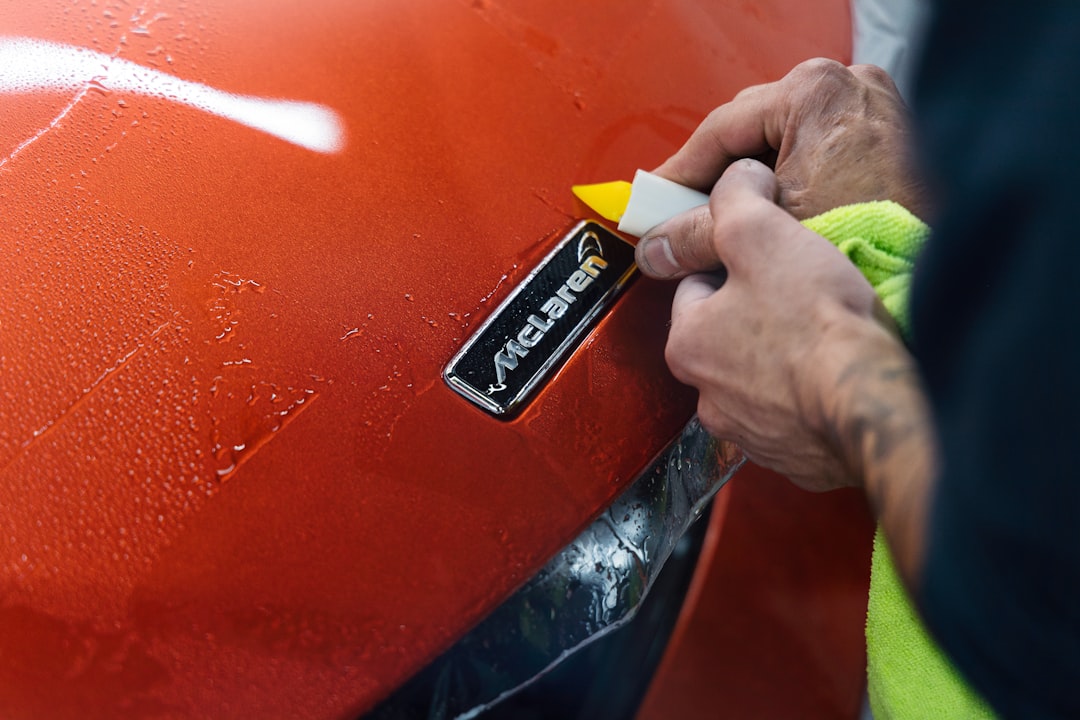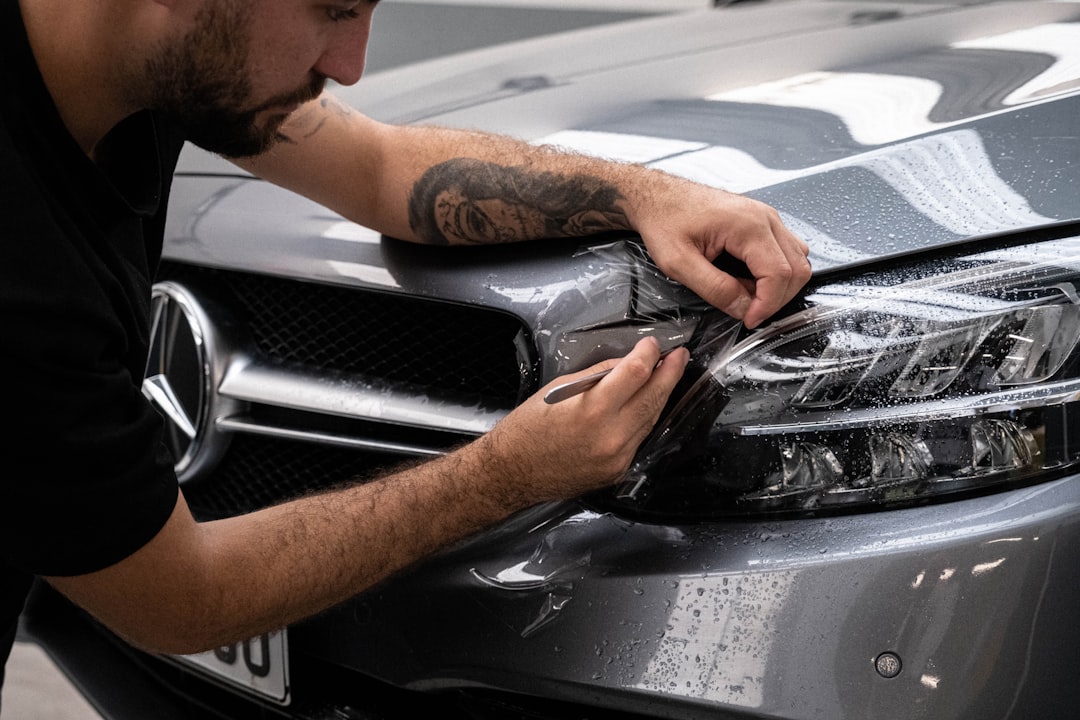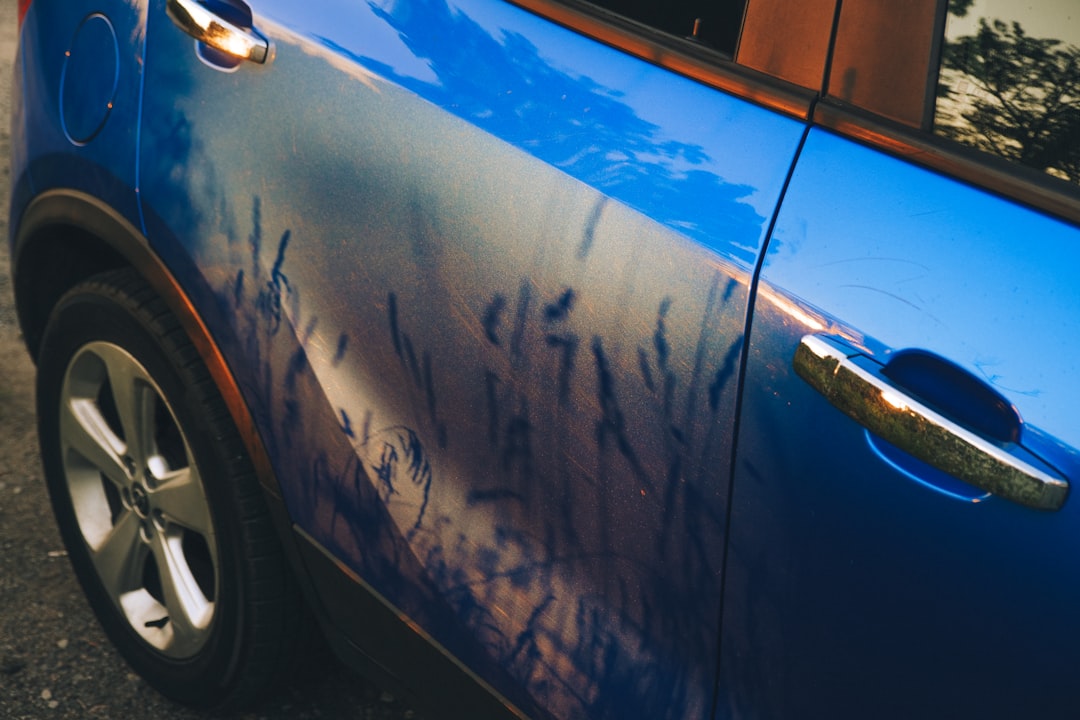

Engage prospects with a scan and streamline customer engagement with FREE QR code marketing tools by Sona – no strings attached!
Create a Free QR CodeFree consultation

No commitment

Engage prospects with a scan and streamline customer engagement with FREE QR code marketing tools by Sona – no strings attached!
Create a Free QR CodeFree consultation

No commitment
Automotive paint protection businesses operate at the critical intersection of high-value services and discerning consumer demand, where reputation and performance drive growth. As competition intensifies, many shop owners and marketers grapple with capturing true buyer interest at the right time, frequently missing high-value prospects simply because traditional methods like brochures or static signage fail to move them seamlessly into follow-up. Often, potential clients who express casual interest at a car expo, service counter, or demo display end up forgotten or untracked, resulting in missed opportunities and wasted event investments.
QR codes offer an agile, frictionless remedy to this longstanding gap between in-person contact and actionable digital engagement. Whether displayed on event banners, packaging, service documents, or demo vehicles, QR codes now allow interested car owners to transition instantly from curiosity to digital connection, booking services, requesting quotes, or joining loyalty lists at the exact moment their intent peaks. When every scan is instantly measured and attributed, businesses finally gain visibility into prospects who would otherwise remain anonymous or be lost to follow-ups that come too late. This shift not only makes every promotional asset work harder but also turns previously manual, error-prone workflows into predictable, high-converting channels.
By adopting QR code strategies, automotive paint protection professionals can solve for lost leads, elevate their data quality, and seize every change in customer interest, building a marketing engine as precise as their protective film services. The following sections reveal how leading shops use QR technology to overcome the perennial challenges of anonymous traffic, delayed outreach, and incomplete data, and how advanced QR platforms empower your team with measurable, data-driven growth at every touchpoint.

Real-world experiences show that many automotive paint protection businesses lose high-value leads when interested car owners interact at expos, meets, or in the shop, yet their interest never gets logged in a CRM or follow-up system. Relying on paper forms or static displays, crucial signals from engaged prospects are often missed or delayed, resulting in lost sales to faster-moving competitors. If your team still depends on sign-up sheets at trade booths or handwritten notes at the front desk, the risk of transcription errors, lost paperwork, and slow outreach is high.
Modern QR codes bridge this crucial offline-to-online gap by instantly capturing lead information at each touchpoint and triggering automated workflows. A well planned QR program replaces analog handoffs with mobile-first experiences, so every scan creates a digital trail that supports timely follow-up, personalized nurturing, and accurate attribution. This transforms every brochure, windshield sticker, or invoice into a measurable marketing asset.
Follow these steps to put QR lead capture into action:
Businesses that adopt this approach consistently lower lead capture friction and reduce missed segmentation opportunities. They also avoid losing top prospects to manual processes or slow follow-up. Modern platforms like Sona QR support each step, automating code creation, scan tracking, and the seamless flow of data into CRMs, email tools, and retargeting audiences.

One of the most persistent challenges in automotive paint protection is a lack of visibility into the buyer journey. Many car owners research at shows, read service flyers, or walk into shops without identifying themselves. As a result, valuable engagement signals stay hidden, and potential leads remain unknown. Sales teams are left to rely on guesswork, call-backs that never happen, or generic follow-up that does not match buyer intent.
QR codes for cars solve this visibility problem with a simple and universally accessible prompt to take action on the spot. When you connect each physical touchpoint to a digital experience, you gain two critical advantages: you reduce friction for the buyer, and you capture rich data that improves your marketing and sales performance over time. This is especially powerful in environments like garages and showrooms where customers have their phones in hand but may not want to download an app or complete a long form.
As a practical example, adding QR codes to after-service cards can drive reviews, referrals, and scheduled maintenance. Customers who scan can be routed to a Net Promoter survey or a referral incentive page, while your team captures contact details and preferences for segmented follow-up. For review capture, try a Google reviews QR workflow.

Choosing the right QR code format is essential for maximizing engagement and minimizing friction. In automotive paint protection, you often need to route prospects to specific actions like requesting a quote, viewing an installation gallery, or saving your contact info for a follow-up. The format you select should match the action you want customers to take next.
Dynamic codes are often best for campaigns that evolve over time, since you can change the destination and track performance across placements. Static codes work well for evergreen information that is unlikely to change, like a shop’s Wi-Fi login or a warranty PDF. The most effective rollouts combine both.
Highly effective QR code formats include:
With a centralized platform like Sona QR, you can generate these formats, tag each code by placement or campaign, and manage destinations from one dashboard. That saves time, reduces errors, and ensures a consistent experience across your physical and digital footprint.

Automotive paint protection businesses often struggle to decide where to invest for measurable growth. You might sponsor a car meet, produce premium brochures, or purchase billboard space, then wonder which touchpoints actually produced qualified leads. QR codes turn these placements into trackable channels, so you can double down on what works and cut what does not.
Start by mapping the customer journey across awareness, consideration, purchase, and post-purchase. Identify where customers already interact with your brand in the physical world and add QR prompts tailored to the next best action. The result is a flow that nudges prospects forward while giving you granular attribution by location, asset, and message.
Aligning QR deployment with high-intent intersections in the buyer journey reduces wasted effort and reveals which creative and surfaces move the needle. Over time, you will build a performance benchmark for every physical asset you deploy.

Every paint protection business risks letting valuable prospects slip away between touchpoints. The right QR use cases ensure that when interest is high, action is easy, and your team captures the data required for timely follow-up. Here are three proven applications aligned to common customer interactions.
Embedding these triggers at the precise moments customers display intent helps you capture details, nurture interest, and progress leads through the funnel. Over time, the data they generate informs smarter offers, better timing, and higher conversion rates across channels.
Each QR code scan is a signal that contains context like where the person was, what asset they engaged with, and what action they took next. When you deploy multiple QR codes across your touchpoints, you can automatically segment audiences by behavior and feed those segments into email, SMS, and paid media for highly relevant follow-up.
This is especially valuable in paint protection where intent often centers around a specific vehicle and time window. A prospect who scans a code on a demo vehicle at a Saturday car meet has a different urgency than a customer who scans a care guide at home after installation. Segmentation allows you to match message and timing to the moment.
With Sona QR, each code becomes a smart entry point to your funnel. You can manage tag logic centrally, automate syncs to your CRM and ad platforms, and build dynamic audiences that reflect real behavior rather than assumptions.
QR codes are more than convenient links. They connect your offline presence with digital engagement, creating a continuous flow of data and action across every channel. In automotive paint protection, this means your print materials, showroom displays, vehicle wraps, and event placements all become gateways to measurable outcomes.
A connected mix reduces the number of anonymous interactions and ensures your team responds in real time. When you orchestrate QR-enabled campaigns, each scan can trigger workflows, enrich profiles, and inform retargeting without manual effort. The result is a cohesive experience that guides buyers from curiosity to conversion with minimal friction.
QR codes serve as the offline onramp to your digital marketing engine. With a centralized platform like Sona QR, you can manage codes for all channels in one place, monitor performance, and sync scan data with your CRM and ad platforms to orchestrate timely, personalized follow-up.
Executing a QR campaign the right way sets you up for measurable outcomes rather than random scans. Treat each code as a mini funnel with a clear goal, a thoughtfully designed destination, and an attribution plan. The following checklist helps you move from concept to live deployment with confidence.
Before you begin, align your team on the business outcome you want: more quotes, faster bookings, better reviews, or higher repeat visits. Then confirm which placements and offers will move that metric most efficiently. Use dynamic codes so you can adapt mid-campaign without reprinting.
Identify the gaps in your current flow. If events generate interest but few follow-ups, prioritize instant quote or booking codes for show vehicles and booth signage. If customers leave satisfied but do not return for maintenance, add codes to receipts and aftercare kits that promote bundle discounts or annual touch-ups.
Choose static codes for evergreen assets and dynamic codes for campaigns where you need tracking, edits, and retargeting data. In most lead generation scenarios, dynamic is the safer choice because it supports measurement and optimization.
Design affects trust and scan rates. Your QR should be on-brand, legible at the expected distance, and paired with a clear CTA. Test codes in real conditions, including the lighting and angles customers will encounter.
Roll out your codes to placements that align with the buyer journey. Start with a few high-traffic, high-intent surfaces so you can learn quickly, then scale to additional assets once you validate performance.
Treat your QR deployment like any performance campaign. Watch both scan volume and downstream actions such as form submissions, bookings, and revenue. Iterate quickly on creative, placement, and offer.
A structured approach like this eliminates guesswork, exposes bottlenecks, and accelerates your time to results. With Sona QR handling code management and analytics, you can focus on creative and placement decisions that increase conversions.
Historically, paint protection providers have struggled to prove which marketing efforts drive revenue. Teams may count phone calls or foot traffic, but they lack a reliable way to connect a brochure or event interaction to a booked install. QR codes solve the first mile of that challenge by turning physical interactions into digital signals. The next mile is attributing those signals to outcomes you care about: quotes, bookings, and repeat visits. For methodology, see Sona’s offline attribution.
Modern analytics platforms close the loop by connecting each scan to a buyer journey. This gives you visibility into which campaigns are working, which audiences are engaged, and where to focus your spend. The data also helps sales leaders coach teams on speed-to-lead, and marketing leaders refine offers and messaging by placement.
With Sona QR and Sona.com, you can track scans by time, device, and location, monitor engagement by placement, and optimize in real time. Sona QR syncs scan activity with HubSpot, Salesforce, and other tools so every lead is enriched with context. See Sona’s HubSpot integration.
Maximizing the value of QR campaigns is about more than placing a code on a sign. Success comes from thoughtful deployment, strong creative, and integrated automation that turns interest into action without delay. The following tips reflect what works best for paint protection shops that manage many physical assets and operate at the pace of local demand.
Focus on tips that support your most common media and that align with your buyer journey. Start with a few high-yield placements, then scale once you have proven results and a repeatable process.
For additional ideas specific to the category, explore PPF marketing tactics and auto detailing strategies.
The biggest marketing wins in automotive paint protection now come from turning every interaction, display, handout, demo, and transaction into a gateway for lasting engagement. QR codes have moved from novelty to necessity, giving you a measurable method to capture interest, reduce anonymous traffic, and accelerate follow-up. When you layer analytics and CRM integrations on top, your business gains the insight needed to invest with confidence, coach teams effectively, and scale what works.
QR code marketing empowers paint protection businesses to capture and nurture leads that once went unnoticed, bridging offline enthusiasm and digital action. By deploying QR codes at critical touchpoints, you gather richer data, deliver timely responses, and convert more moments of interest into booked installs and repeat visits. With a platform like Sona QR for code management and Sona.com for attribution, you can connect scans to revenue and make QR a core part of your performance marketing strategy. Start creating QR codes for free.
QR codes have transformed automotive paint protection businesses from simple service providers into savvy, data-driven growth engines. Whether it’s capturing qualified leads, enhancing customer engagement, or streamlining follow-up communications, QR codes turn every marketing touchpoint—like vehicle decals, service cards, or promotional materials—into a powerful tool for driving sales and customer loyalty. Imagine instantly knowing which campaigns generate the most inquiries and having the agility to optimize them on the fly.
With Sona QR, you can create dynamic, trackable QR codes tailored specifically for your paint protection services, update campaigns instantly without costly reprints, and link every scan directly to your revenue streams. No more guesswork—just actionable insights that help you acquire more customers and deliver seamless experiences from first scan to final sale.
Start for free with Sona QR today and transform every scan into your next loyal customer.
QR codes instantly capture lead information at touchpoints, enabling real-time follow-up, personalized nurturing, and accurate attribution, which prevents lost leads and improves data quality.
Use cases include instant quote requests on demo vehicles, appointment bookings from service slips, product info and tutorials on packaging, and driving reviews or referrals via after-service cards.
They benefit by reducing anonymous interactions, enabling immediate customer engagement at peak intent, tracking campaign performance, automating workflows, and converting static assets into measurable lead generators.
Best practices include placing visible, branded QR codes on demo vehicles with clear benefit-driven calls to action, using dynamic codes for tracking and updates, and linking to mobile-friendly quote or booking forms.
QR codes on cars direct prospects to digital experiences like instant quotes or bookings, capturing rich data at moments of high intent, enabling timely follow-up, and providing measurable ROI from mobile engagement.
Dynamic web link codes to conversion-optimized landing pages, vCards for instant contact saving, SMS or email pre-filled messages, Wi-Fi access codes in waiting areas, and app download codes for loyalty or scheduling are most effective.
Place QR codes at events and expos, on packaging and labels, point-of-sale counters, vehicle branding, direct mail, digital signage, and trade show materials to track and optimize lead generation.
By tagging QR codes per journey stage and action, tracking scan context like location and timing, and syncing data to CRM and ad platforms, businesses can segment and retarget audiences with relevant, timely messages.
Key steps include defining a clear goal, choosing the appropriate QR code type, designing and testing the code for usability, deploying it across high-impact channels, training staff, and continuously tracking and optimizing performance.
QR codes enable attribution of scans to specific campaigns and assets, connect scans to downstream actions like bookings, enrich CRM records automatically, and unify multi-touch buyer journeys for comprehensive performance insights.
Use unique codes for each asset, add UTM parameters for clean analytics, automate immediate follow-up, train staff to promote scanning, and deploy creative placements beyond the shop like air fresheners or care cards.
Use Sona QR's trackable codes to improve customer acquisition and engagement today.
Create Your FREE Trackable QR Code in SecondsJoin results-focused teams combining Sona Platform automation with advanced Google Ads strategies to scale lead generation

Connect your existing CRM

Free Account Enrichment

No setup fees
No commitment required

Free consultation

Get a custom Google Ads roadmap for your business






Launch campaigns that generate qualified leads in 30 days or less.
